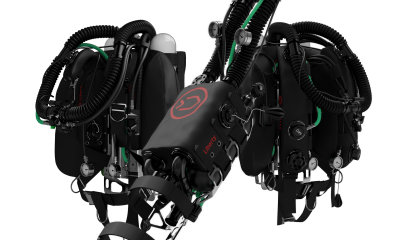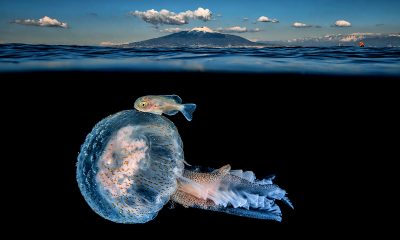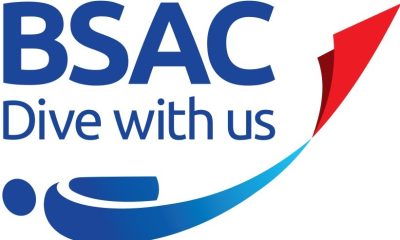News
BSAC Diving Conference 2016 award winners announced
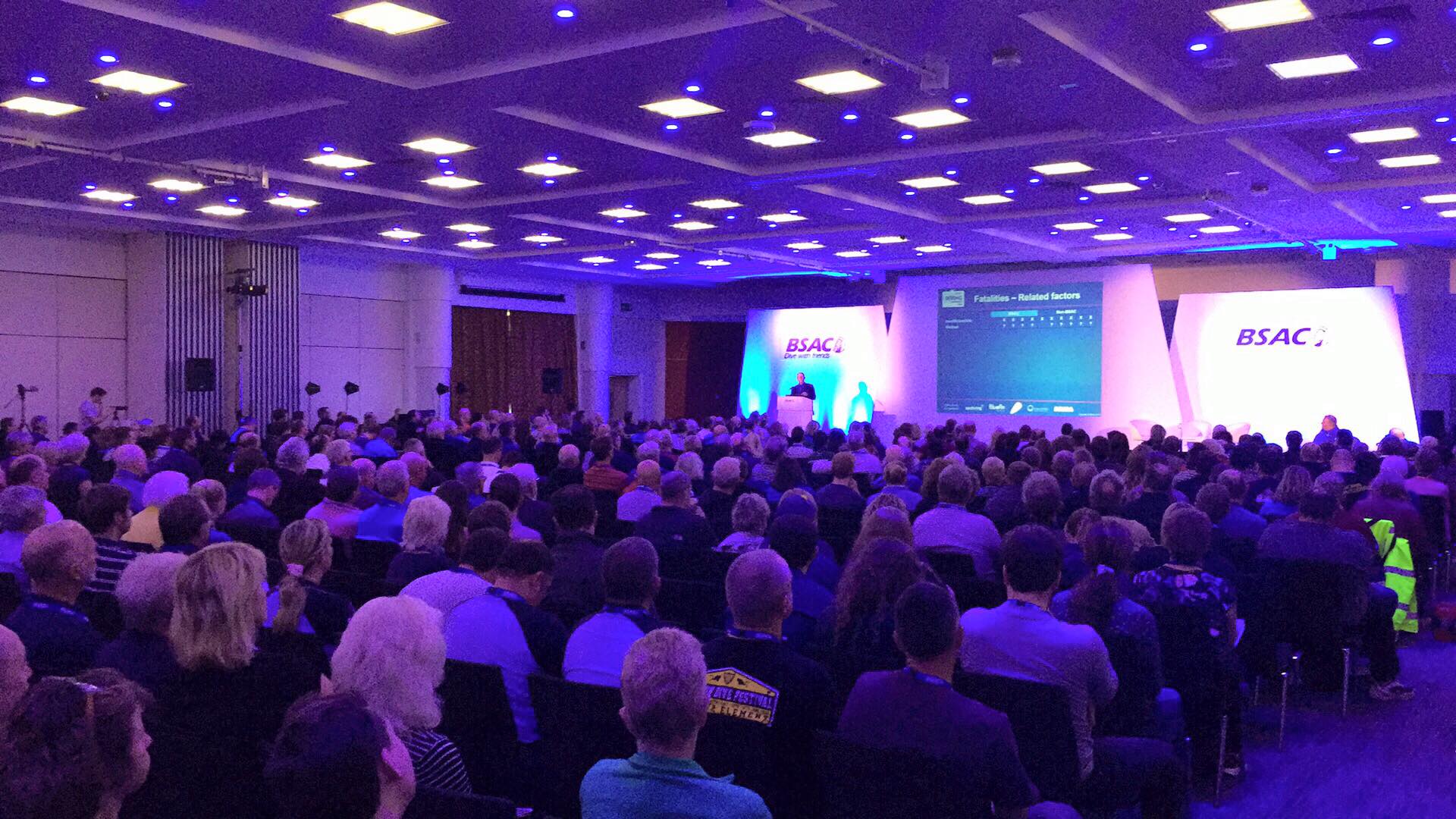
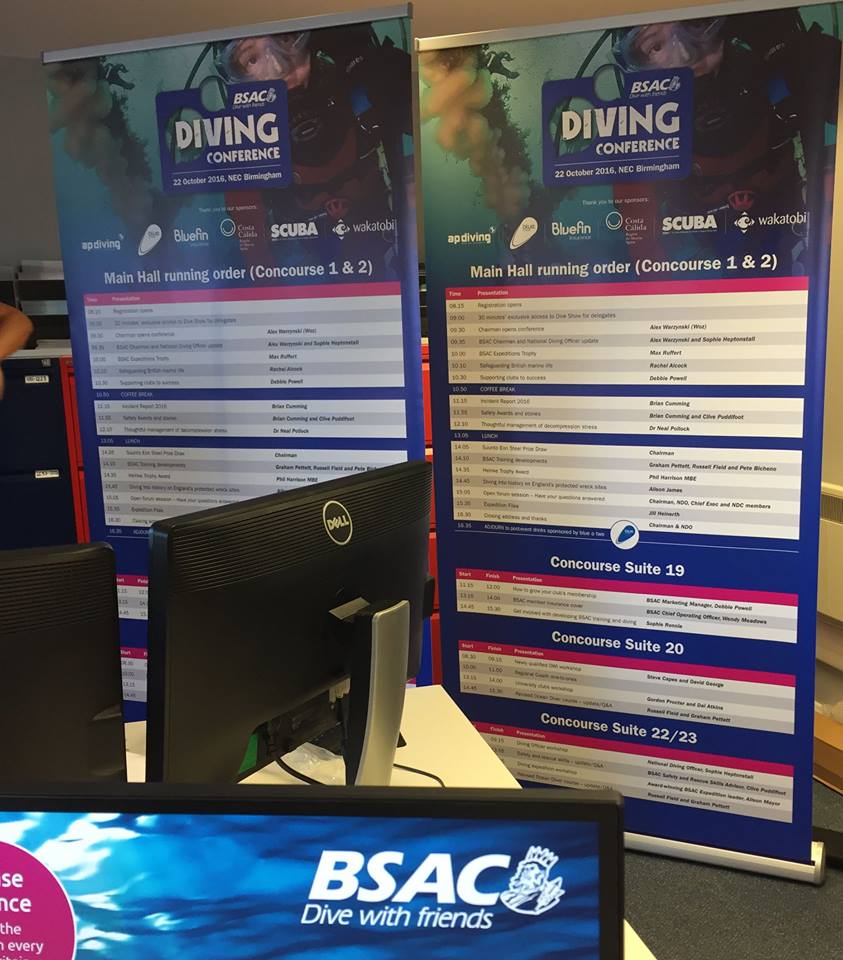 The BSAC Diving Conference 2016, held at the Birmingham NEC on 22 October, saw over 600 delegates enjoy a packed and informative programme of BSAC news, diver training updates and open forums. With an increased number of breakout sessions, impressive external speakers and – new for 2016 – an after conference dinner, the 2016 event was a sell-out.
The BSAC Diving Conference 2016, held at the Birmingham NEC on 22 October, saw over 600 delegates enjoy a packed and informative programme of BSAC news, diver training updates and open forums. With an increased number of breakout sessions, impressive external speakers and – new for 2016 – an after conference dinner, the 2016 event was a sell-out.
The keynote speakers – world-renowned authority on diving medicine Dr Neal Pollock and underwater explorer and filmmaker Jill Heinerth – informed and enthralled the conference audience while underwater photographer Steve Jones entertained the after dinner crowd.
Following the event, BSAC has announced the full list of BSAC Diving Conference 2016 award winners:
COLINS & CHAMBERS OWI AWARD – for the most meritorious candidate on the Open Water Instructor course
Winner: David Humphreys
ANALOX AI AWARD – for the most meritorious candidate on the Advanced Instructor course
Winner: Alan Brown
FIRST CLASS DIVER – awarded to the successful 2016 candidates
Michelle Haywood, Philip Welch, Martin Keane, Scott Ayrey, Tim Gort, Colin Walker
AP DIVING AWARD – awarded for the most admirable performance in the First Class Diver exam
Winner: Tim Gort
NATIONAL INSTRUCTOR – awarded to the successful 2016 candidates
Dai Atkins, Simon Child, Philip Johnston, Rob Sewell
WEEZLE AWARD – awarded to the person who performs most meritoriously in the National Instructor exam
Winner: Rob Sewell
WILKINSON SWORD – awarded for the most admirable performance in a BSAC nationally assessed examination
Winner: Rob Sewell
BSAC SAFETY AWARD – presented in recognition of endeavouring to save a life without involving diving techniques
Winners: Mark Paisey , Jack Ingle, Lee Woodmass
ALAN BROADHURST AWARD – awarded for the use of good diving lifesaving techniques
Winners: Jason Tamplin, Peter Routledge, Ashley Roberts, Mark Lamb
HEINKE TROPHY 2016 – for the branch judged to have done the most in furthering the interest of BSAC and its members
Winner: East Cheshire SAC
Commended: Severnside SAC and Sheffield University SAC
BSAC EXPEDITION TROPHY – presented to the organizer of the most significant British diving expedition of the year
Winner: Sub C Divers and Bury SAC (Northern Ireland Venture 2015)
COLIN MCLEOD AWARD – to the person/s who in the opinion of the BSA Jubilee Trust has contributed to international cooperation and harmony in diving and associated activities
Winner: Dave Shaw
SCUBAPRO COUSTEAU AWARD – for the BSAC member who goes that extra mile in the promotion of the club’s aims and objectives
Winner: Russell Field
THANK YOU AWARD – presented to those leaving positions at the time of the Conference
Mike Rowley, Maria Harwood, Paul Compton, Martyn Bowie and Phil Harrison
Check out BSAC’s Facebook page for more photos and news from the BSAC Diving Conference 2016.
To find out more about BSAC, visit www.bsac.com.
Gear News
Scubapro Free Octopus Promotion 2024
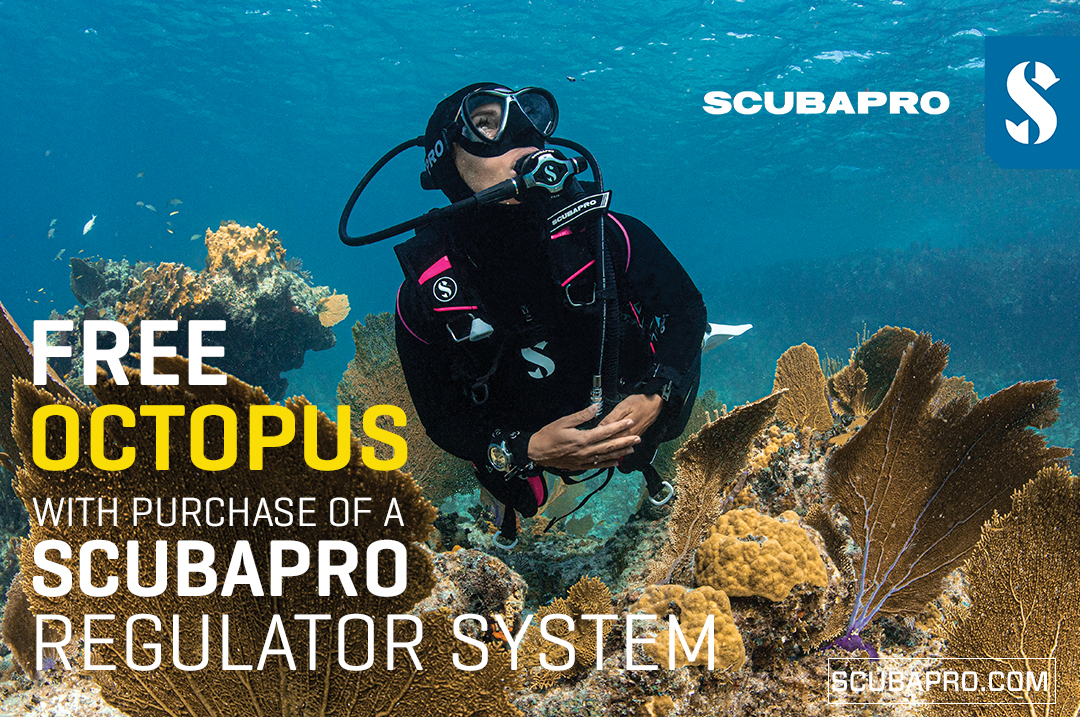
Free Octopus with every purchase of a SCUBAPRO regulator system
Just in time for the spring season, divers can save money with the FREE OCTOPUS SPRING PROMOTION! Until July 31st SCUBAPRO offers an Octopus for free
with every purchase of a regulator system!
Get a free S270 OCTOPUS with purchase of these combinations:
MK25 EVO or MK19 EVO with A700
MK25 EVO or MK19 EVO with S620Ti
MK25 EVO or MK19 EVO with D420
MK25 EVO Din mit S620Ti-X
Get a free R105 OCTOPUS with purchase of the following combinations:
MK25 EVO or MK19 EVO with G260
MK25 EVO or MK17 EVO with S600
SCUBAPRO offers a 30-year first owner warranty on all regulators, with a revision period of two years or 100 dives. All SCUBAPRO regulators are of course certified according to the new European test standard EN250-2014.
Available at participating SCUBAPRO dealers. Promotion may not be available in all regions. Find an authorized SCUBAPRO Dealer at scubapro.com.
More information available on www.scubapro.com.
Blogs
Northern Red Sea Reefs and Wrecks Trip Report, Part 3: The Mighty Thistlegorm
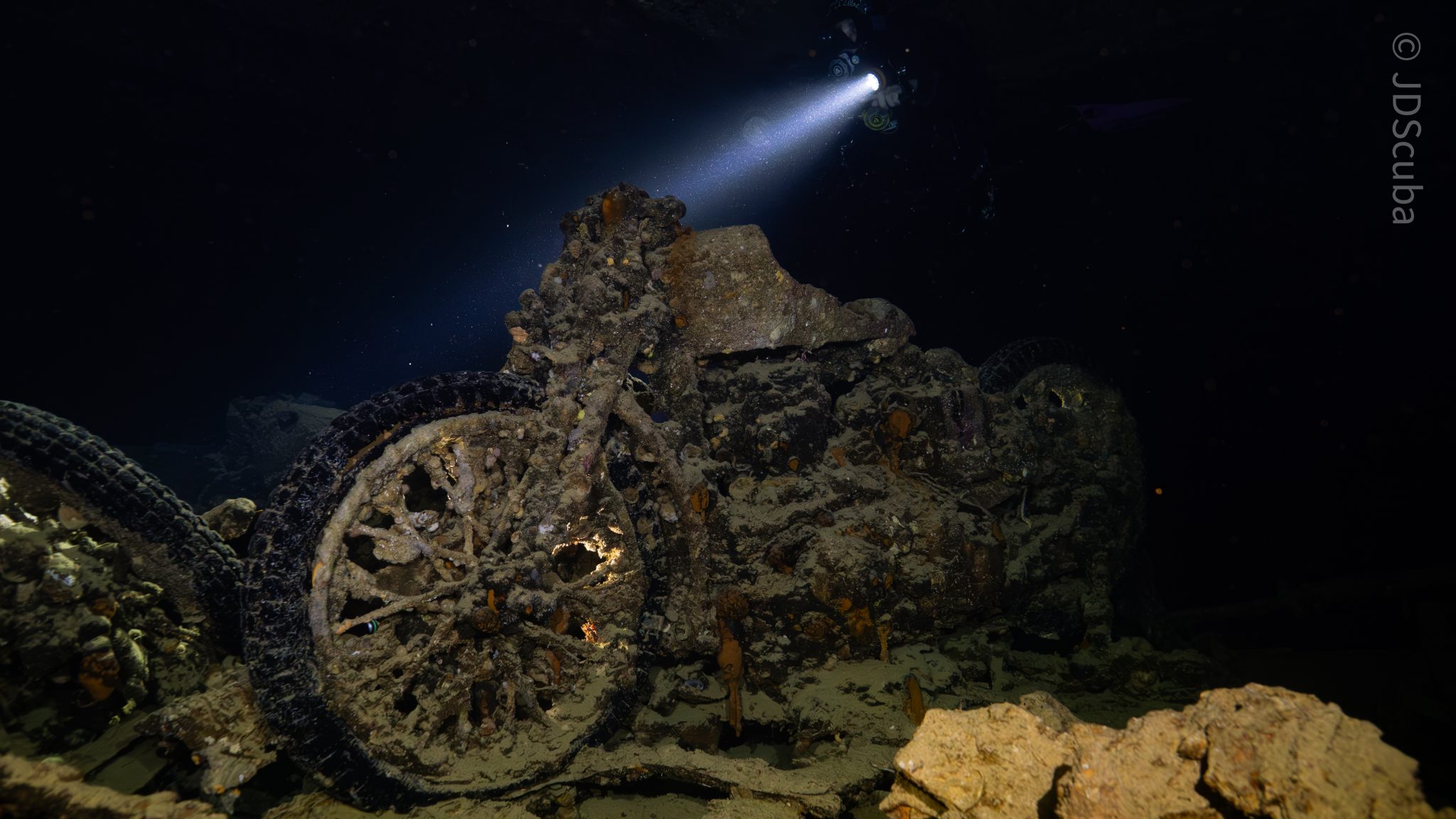
Jake Davies boards Ghazala Explorer for an unforgettable Red Sea diving experience…
Overnight, the wind picked up, making the planned morning dive a bit bumpy on the Zodiacs to the drop point on Thomas Reef. There, we would dive along the reef before descending through the canyon and then passing under the arch before ascending the wall with a gentle drift. The site provided great encounters with more pelagic species, including shoals of large barracuda, tuna, and bigeye trevally.
Once back on the boat, it was time to get everything tied down again as we would head back south. This time, with the wind behind us, heading to Ras Mohammed to dive Jackfish Alley for another great gentle drift wall dive before then heading up the coast towards the Gulf of Suez to moor up at the wreck of the Thistlegorm. This being the highlight wreck dive of the trip and for many onboard, including myself, it was the first time diving this iconic wreck. I had heard so much about the wreck from friends, and globally, this is a must on any diver’s list. Fortunately for us, there was only one other boat at the site, which was a rarity. A great briefing was delivered by Ahmed, who provided a detailed background about the wreck’s history along with all the required safety information as the currents and visibility at the site can be variable.
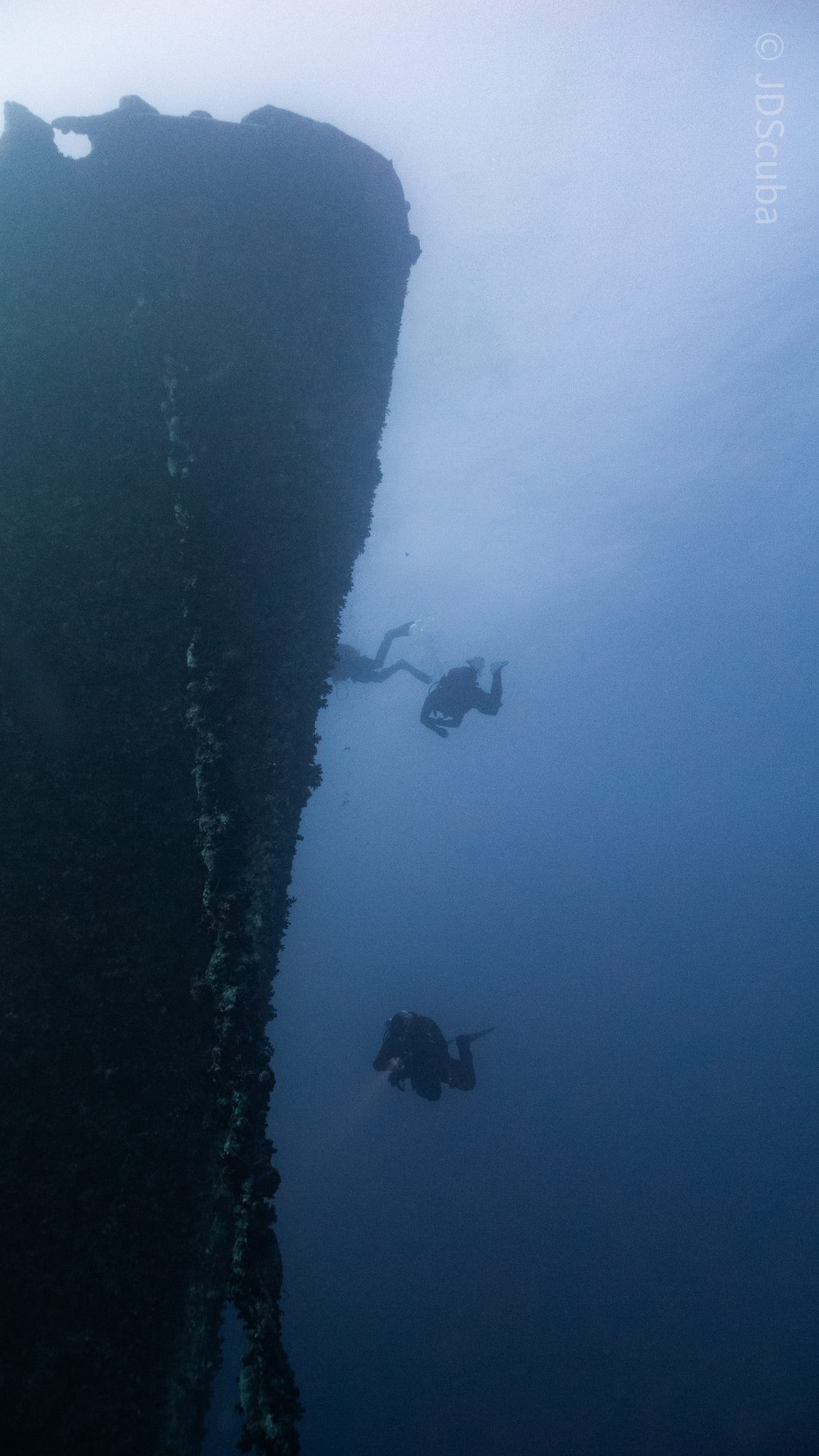
Kitting up, there was a lot of excitement on deck before entering the water and heading down the shoreline. Descending to the wreck, there was a light northerly current which reduced the visibility, making it feel more like the conditions that can be found off the Welsh coast. At 10m from the bottom, the outline of the wreck appeared as we reached the area of the wreck which had been bombed, as our mooring line was attached to part of the propeller shaft. Arriving on deck, instantly everywhere you looked there were many of the supplies which the ship was carrying, including Bren Carrier tanks and projectiles that instantly stood out.
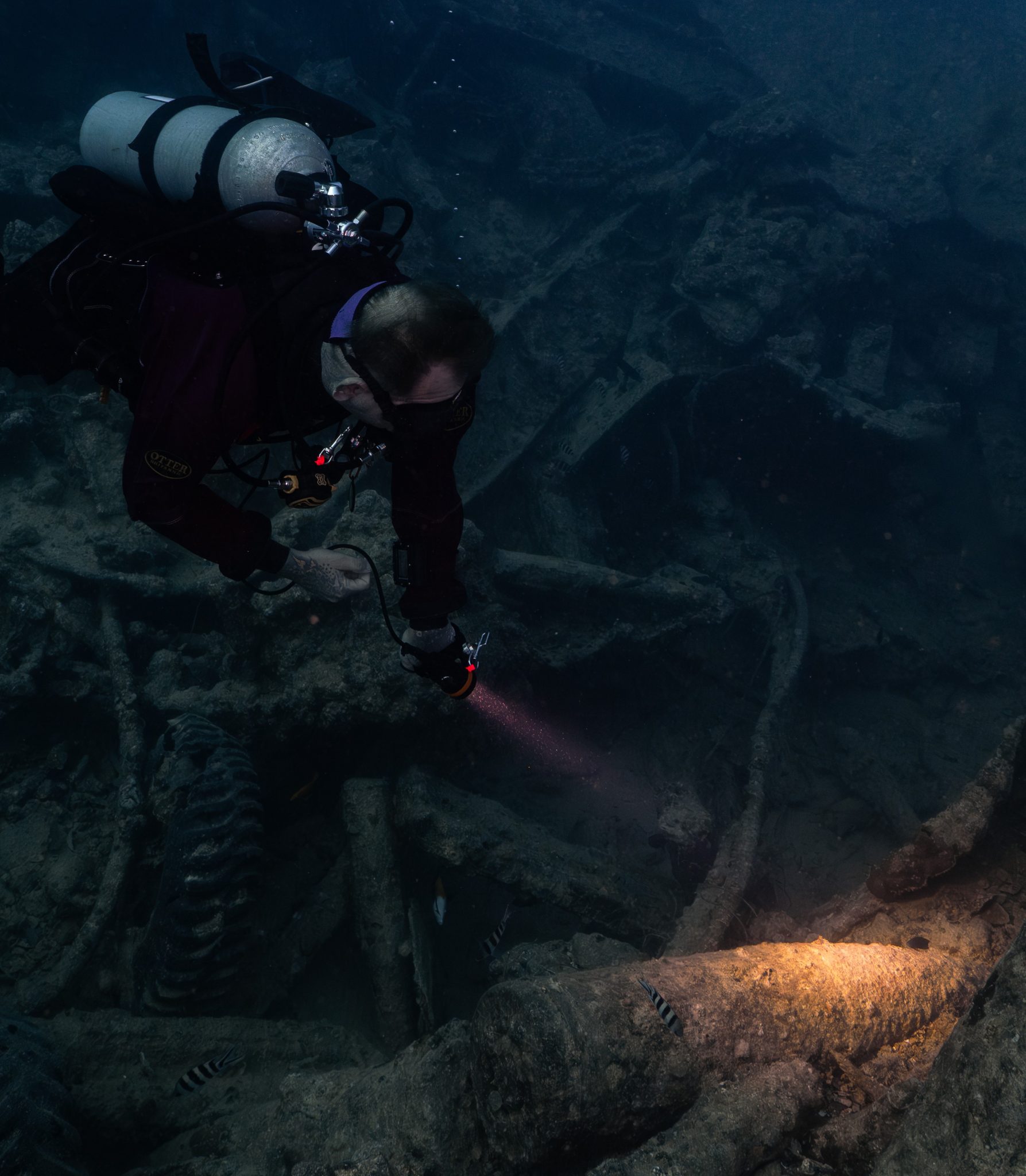
We headed around the exterior, taking a look at the large propeller and guns mounted on deck before entering the wreck on the port side to take a look in the holds. It was incredible to see all the trucks, Norton 16H, and BSA motorcycles still perfectly stacked within, providing a real snapshot in time.

Overall, we had four dives on the Thistlegorm, where for all of the dives we were the only group in the water, and at times, there were just three of us on the whole wreck, which made it even more special, especially knowing that most days the wreck has hundreds of divers. Along with the history of the wreck, there was plenty of marine life on the wreck and around, from big green turtles to batfish, along with shoals of mackerel being hunted by trevally. Some unforgettable dives.
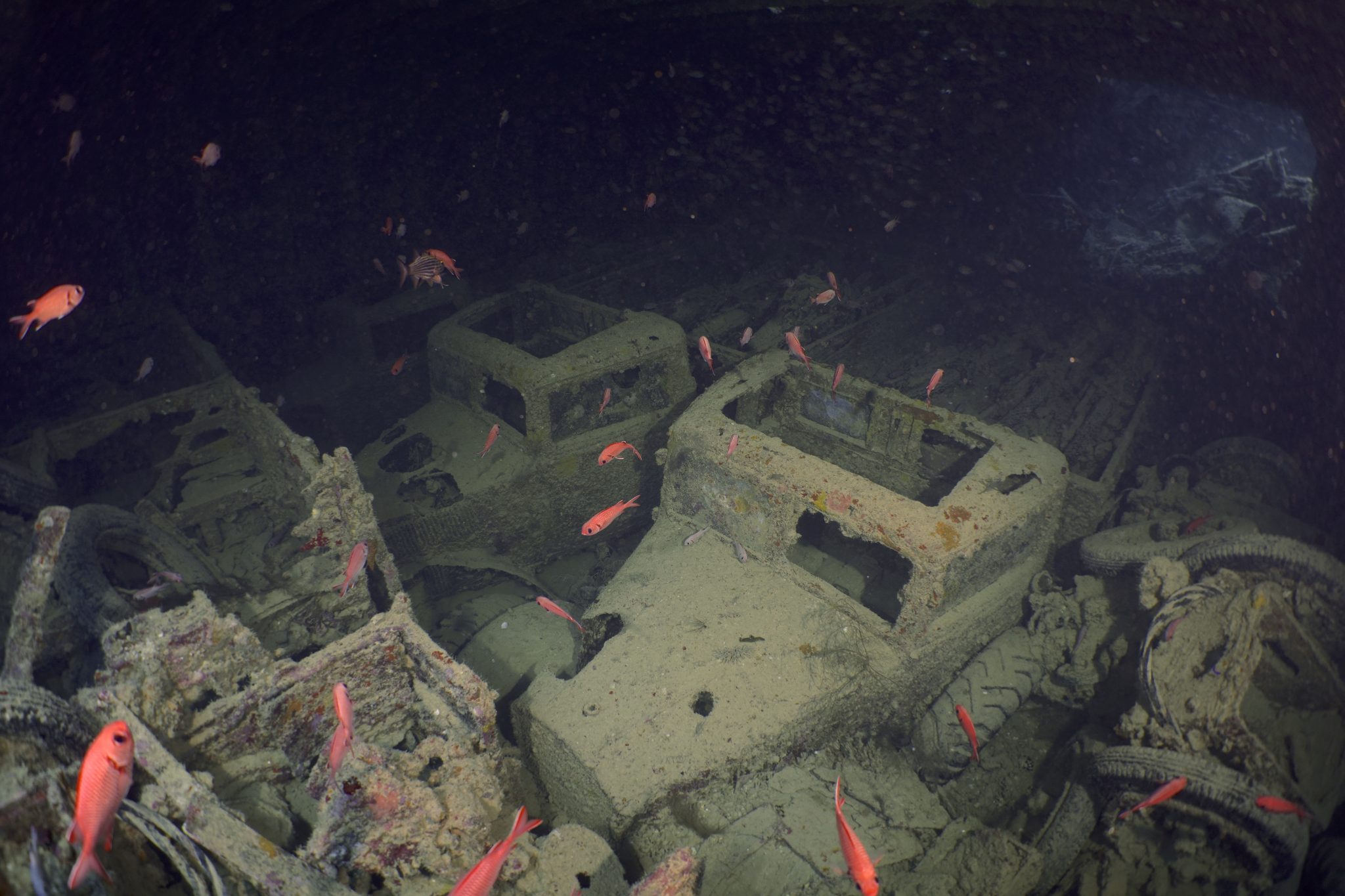
The final leg of the trip saw us cross back over the Suez Canal to the Gobal Islands where we planned to stay the night and do three dives at the Dolphin House for the potential of sharing the dive with dolphins. The site, which included a channel that was teeming with reef fish, especially large numbers of goatfish that swam in large shoals along the edge of the reef. These were nice relaxing dives to end the week. Unfortunately, the dolphins didn’t show up, which was okay as like all marine life they are difficult to predict and you can’t guarantee what’s going to be seen. With the last dive complete, we headed back to port for the final night where it was time to clean all the kit and pack before the departure flight the next day.
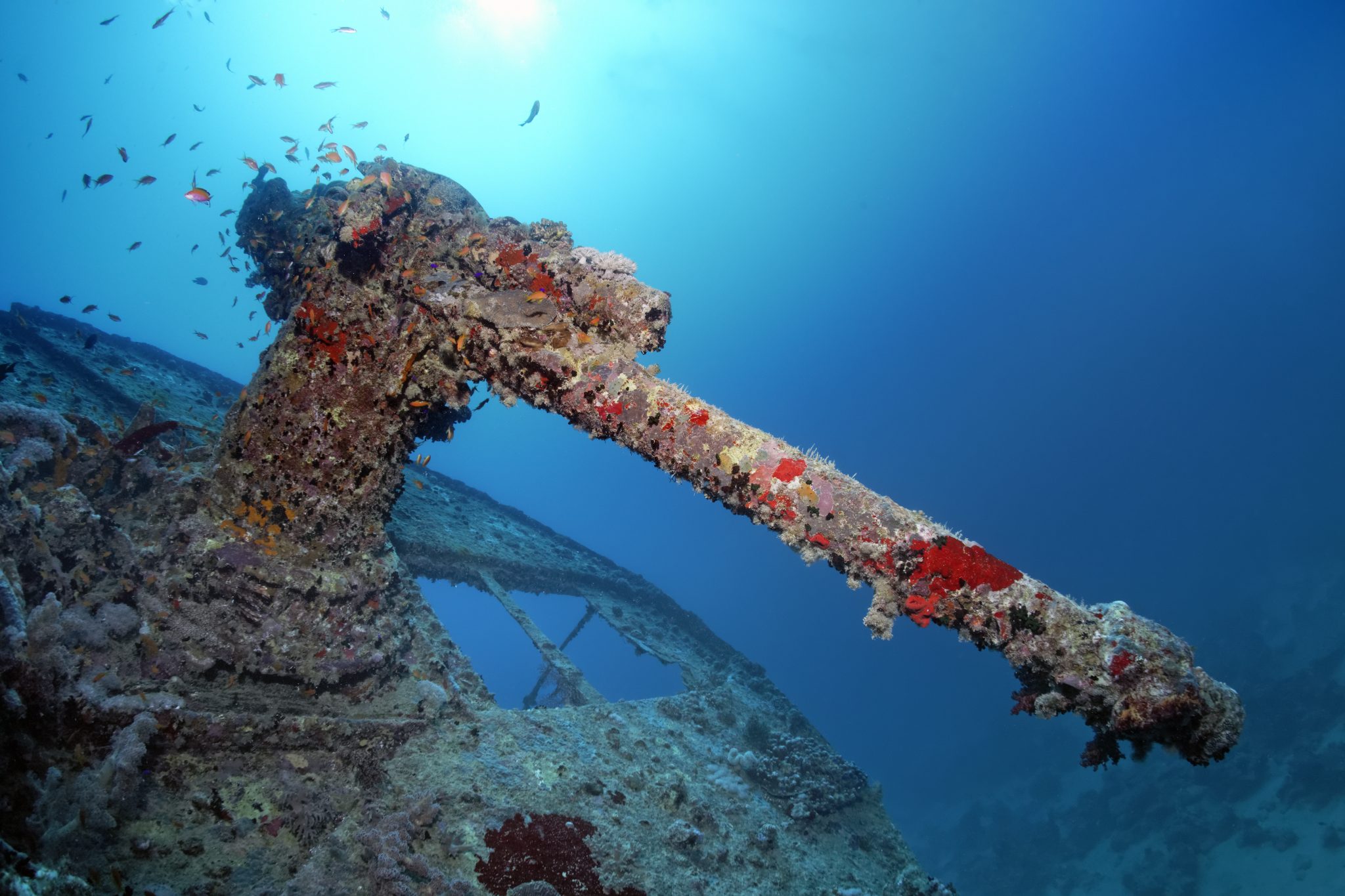
The whole week from start to finish on Ghazala Explorer was amazing; the boat had all the facilities you need for a comfortable week aboard. The crew were always there to help throughout the day and the chefs providing top quality food which was required after every dive. The itinerary providing some of the best diving with a nice mixture of wreck and reef dives. I would recommend the trip to anyone, whether it’s your first Red Sea liveaboard in the Red Sea or you’re revisiting. Hopefully, it’s not too long before I head back to explore more of the Red Sea onboard Ghazala Explorer.
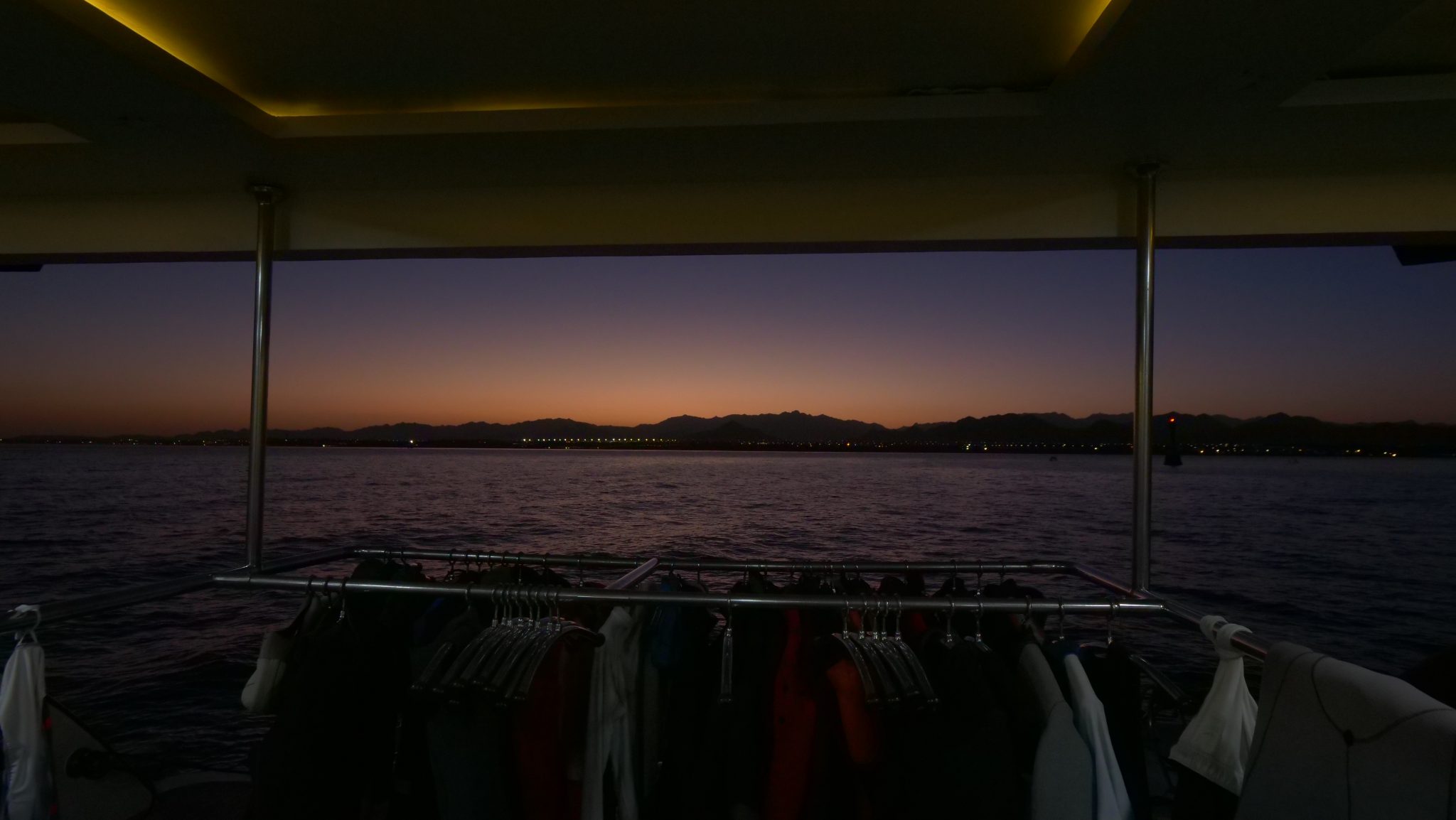
To find out more about the Northern Red Sea reef and wrecks itineraries aboard Ghazala Explorer, or to book, contact Scuba Travel now:
Email: dive@scubatravel.com
Tel: +44 (0)1483 411590
Photos: Jake Davies / Avalon.Red
-
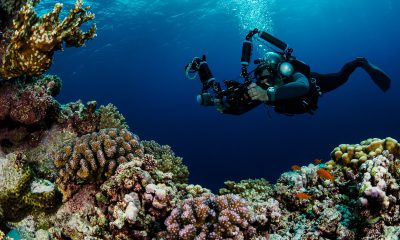
 News3 months ago
News3 months agoHone your underwater photography skills with Alphamarine Photography at Red Sea Diving Safari in March
-
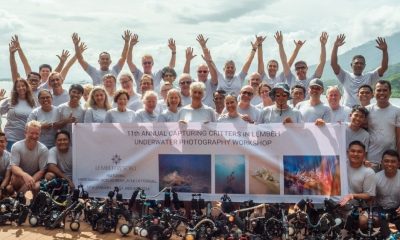
 News3 months ago
News3 months agoCapturing Critters in Lembeh Underwater Photography Workshop 2024: Event Roundup
-
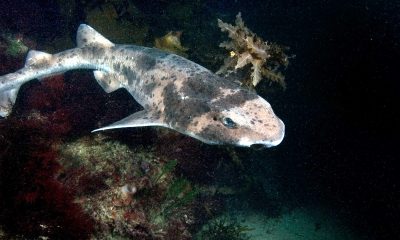
 Marine Life & Conservation Blogs2 months ago
Marine Life & Conservation Blogs2 months agoCreature Feature: Swell Sharks
-

 Blogs2 months ago
Blogs2 months agoMurex Resorts: Passport to Paradise!
-
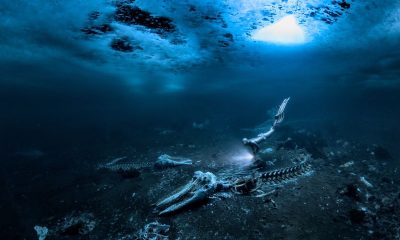
 Blogs2 months ago
Blogs2 months agoDiver Discovering Whale Skeletons Beneath Ice Judged World’s Best Underwater Photograph
-
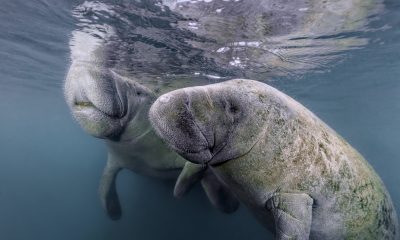
 Marine Life & Conservation2 months ago
Marine Life & Conservation2 months agoSave the Manatee Club launches brand new webcams at Silver Springs State Park, Florida
-
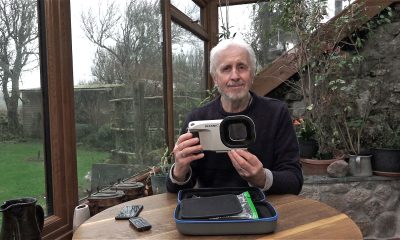
 Gear Reviews3 months ago
Gear Reviews3 months agoGear Review: Oceanic+ Dive Housing for iPhone
-
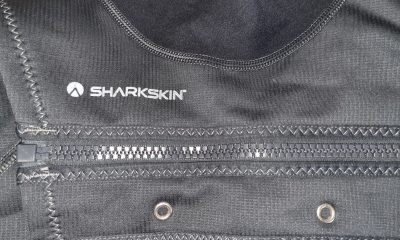
 Gear Reviews2 weeks ago
Gear Reviews2 weeks agoGEAR REVIEW – Revolutionising Diving Comfort: The Sharkskin T2 Chillproof Suit



